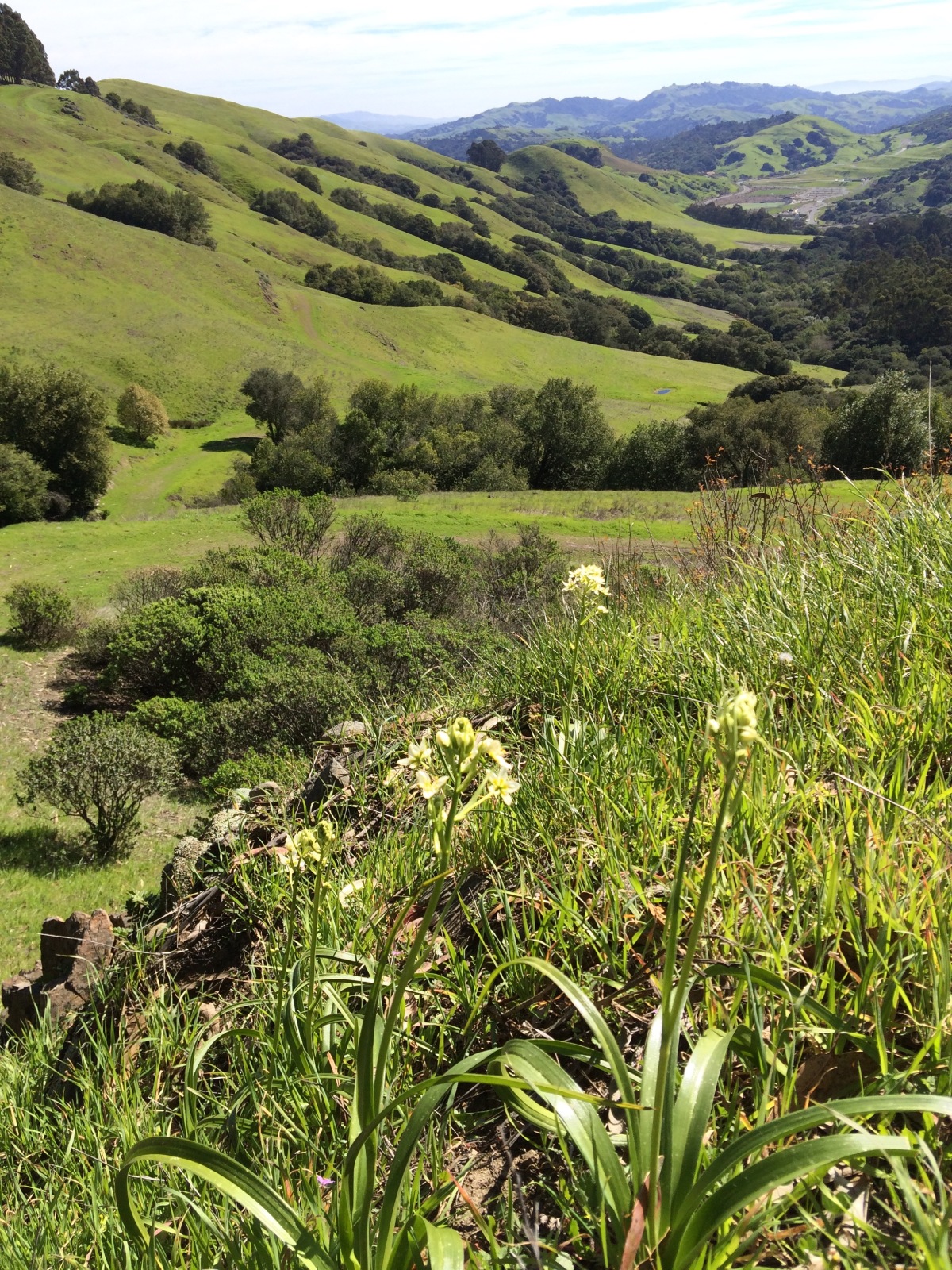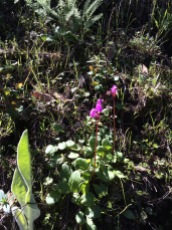My hiking buddy Marg suffers from Multiple Chemical Sensitivity (MCS) and so she tries to find places to hike where chemical herbicides and pesticides are not used. This is not as easy as one might imagine. Land managers spray tons of herbicides in our public parks and don’t always alert the public.
Marg is actively involved in community groups fighting the cutting of trees in the East Bay hills, financed by FEMA, but even with much vocal opposition from the community the project continues. Contractors are now in the process of cutting hundreds of trees and then treating the stumps with herbicides to keep them from sprouting. The herbicides will be applied multiple times and the project will go on for years, but the public continues to protest. http://milliontrees.me/2015/11/27/public-opposition-to-pesticide-use-in-our-public-parks/. Marg was threatened with arrest recently when, on a walk, she came upon a tree-cutting crew and, um, got in their way.
On our hikes I’m always stopping to identify birds and native plants and flowers. It seems like on every hike, Marg and I revert to the same argument: what is native? Does native mean before humans lived here, like 10,000 years ago? Or does it mean before whites settled here? Or does it include plants that have adapted to this environment and thrive here? And why do I care? My answer is that I just appreciate plants that have adapted to this place over centuries, like the California Buckeye, Aesculus californica, endemic to our coastal hills and foothills. The buckeye blooms spectacularly in spring, loses its leaves in the dry summer and looks dead with only its fruit hanging on bare branches by fall. Or the perennial wild cucumber, Marah macrocarpa, which dies back during the dry season and stores water in a huge tuberous root (it’s also called man root). Of course eucalyptus is one of the “invasives” that have adapted well and are now being felled. This argument can go on forever and I won’t repeat it here. Suffice to say that Marg has convinced me that the eucs should not be cut down. I did not need to be convinced that spraying toxic chemicals is bad policy.
In her search for toxic-free places to hike, Marg was assured by a higher up at the East Bay Municipal Utility District (EBMUD) that no chemicals are applied to the watershed lands in their purview. So last week we chose to hike on EBMUD land. For most trails, hikers are required to buy a permit and it’s easy to do on the EBMUD website: https://www.ebmud.com/recreation/buy-trail-permit/#. This watershed has miles and miles of developed, well-maintained trails and we will be sampling more in the future.











It’s a trillium. But I’m unsure of the complete botanical name. There are 40 species. gorgeous! I have one in our garden dug in Marin years ago. Lupine is spelled with an e at the end! Yvonen
LikeLiked by 1 person
Nice post. Before humans is probably more than 10,000 years ago. I’m guessing your unidentified flower is an aging trillium.
LikeLiked by 1 person
Thanks Don. Yes, it is a trillium, but it didn’t look aged. Just one of the 40 species.
LikeLiked by 1 person
Wow! Thanks for writing this Molly
Where do you find the time?
By now you’ve heard EB PArks is planning to spray from a helicopter pasture lands in Briones
(Which adjoins the reservoir and EBMUD land) with a pesticide banned in ny and with the name “milestone”
LikeLiked by 2 people
For now, we stopped the aerial spraying, but they said the most ridiculous things when we called to object, like it would help bicycles tires not be punctured by the plants (how about staying on trail and not running over wild animals), or that it was for boy scouts to camp (by poisoning them) and it was too steep for goat. Nothing is too steep for goats. So we have to keep calling or they will probably do it.
Since stopping the planned poisoning of Ring Mountain in Marin, with the rare Calochortus Tiburonensis and petroglyphs, all poisoning of the Tamalpais and Marin watershed has been stopped. If only that could be done in the EBRP in the East Bay.
Beautiful photos and story!
LikeLiked by 1 person